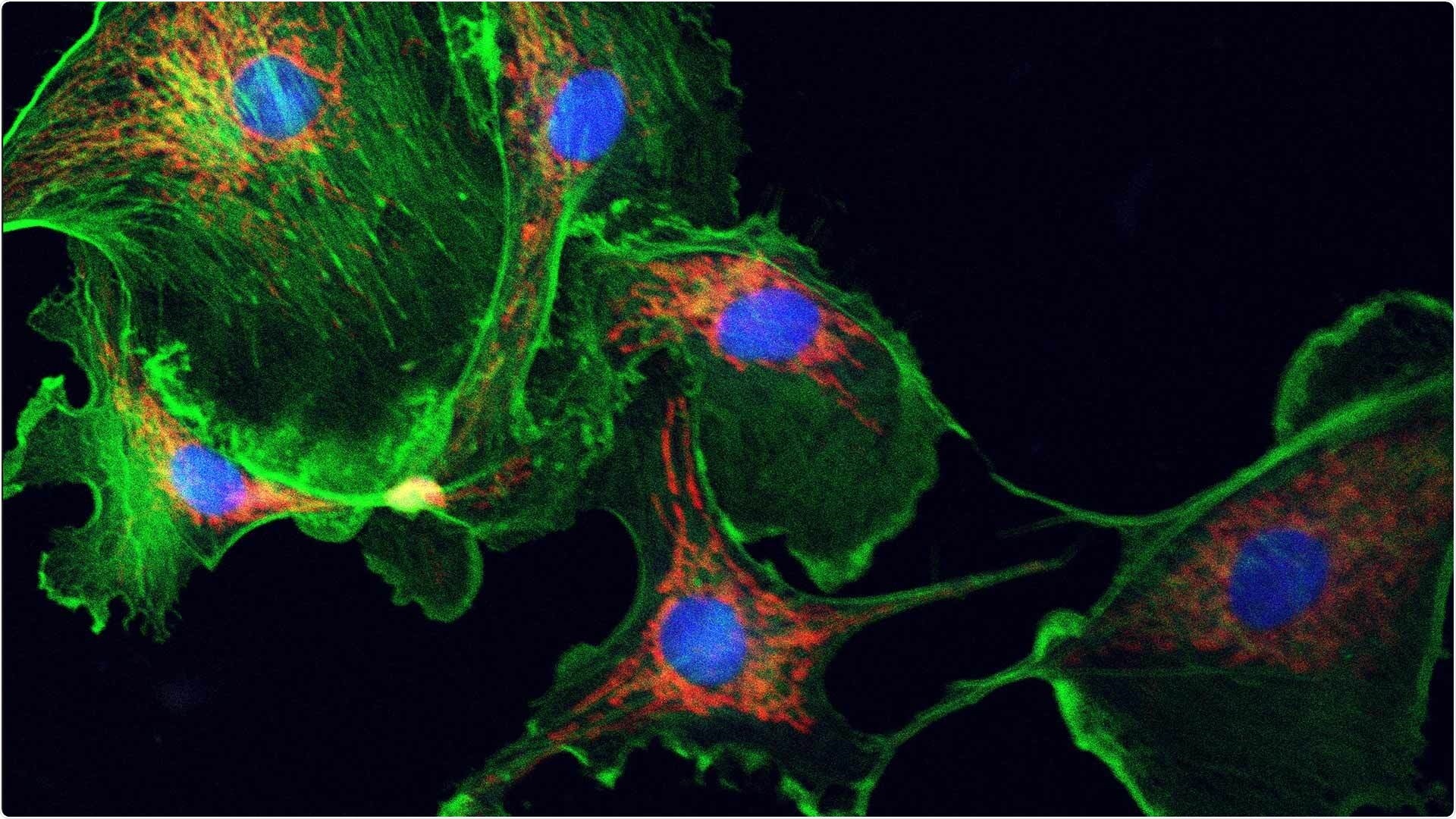Researchers earlier identified that animal cell cytoskeletons—shapeshifting meshes of internal filaments that provide cells structure and help interact with their environments—rearrange quickly at times, starting an earthquake-like disturbance in the part of the cell.

Cytoskeletons provide internal structure to cells while helping them communicate with their environment. New computer simulations developed by University of Maryland researchers (below) reveal that earthquake-like “cytoquakes” in parts of cells are caused by the slow buildup and sudden release of mechanical energy within the cell. Image Credit: Image by iStock.
The researchers dubbed the phenomena cytoquakes; however, there was little understanding on why or how it occurs.
Scientists from the University of Maryland generated novel computer simulations that unravel that cytoquakes occur due to the slow buildup and rapid release of mechanical energy within cells. They may also help respond quickly to signals from the external environment, such as hormones in the bloodstream or chemicals produced by other cells.
The observations are published on October 4th, 2021, in the Proceedings of the National Academy of Sciences journal.
We think these cytoquakes must be biologically important because the cytoskeleton is involved in so many functions within the cell. Understanding the physics behind them can provide insight into how cells work.”
Garegin Papoian, Study Co-Author and Monroe Martin Professor, Chemistry and Biochemistry, University of Maryland
Papoian also has a joint appointment at the Institute for Physical Science and Technology.
The cytoskeleton is similar to internal scaffolding, composed of a network of filaments that continually shrink, grow, detach, and attach from one another. Along with providing structure, the filaments also act as tracks for chemical signals to circulate from one part of a cell to another.
Papoian and his associates assumed that the rapid restructuring that occurs in cytoquakes was the result of the cytoskeleton’s physical structure being specifically sensitive to its environment.
To analyze the hypothesis, the researchers developed a simulation of a model cytoskeleton employing an innovative active-matter simulation software that they created named MEDYAN—short for “mechanochemical dynamics of active networks.” The software implements the laws of physics and chemistry to foretell the interaction and behavior of molecules within the cytoskeleton.
The research disclosed that the filaments in a cytoskeleton arrange themselves into a bit like a shape-shifting tensegrity structure—a type of geometric toy or sculpture made of floating rods and cables under compression and tension that seems to resist gravity.
Examining these structures helped Papoian and his co-workers comprehend tension release within the cytoskeleton. They identified that tension applied to one area of the structure builds and creates tension until it releases instantly in another area.
The physical structure of the cytoskeleton permits tension to build between some of the filaments similar to the tension between two tectonic plates along a fault line in the earth’s crust or between grains of sand in a sand pile. When some threshold is met and the tension instantly releases, an earthquake rumbles, the pile of sand collapses, or a cytoquake occurs.
But why do cells spend energy on cytoquakes?
We postulate that the cytoquake mechanism poises the cell to react quickly to external signals from its environment compared to a system without this mechanism.”
Garegin Papoian, Study Co-Author and Monroe Martin Professor, Chemistry and Biochemistry, University of Maryland
For instance, a cell concerned with repairing injuries must rush to the wound site, and the cytoquake mechanism might retaliate to chemical signals from the injury site and impact the cell into motion. During cell migration through the body, the leading edge might also employ the mechanism to collapse or project protrusions to help it explore its local neighborhood.
The researchers’ further step would be to improve on their simulation methods to incorporate more parts of a cell, like a nucleus. They lately simulated the outer membrane of a cell and examined how the cytoskeleton drives against this membrane to develop finger-like protrusions.
This work is showing us that we can use MEDYAN to model important components of a cell. Ideally, we would like to keep going and essentially build the fundamental model of a whole cell at single molecule resolution.”
Garegin Papoian, Study Co-Author and Monroe Martin Professor, Chemistry and Biochemistry, University of Maryland